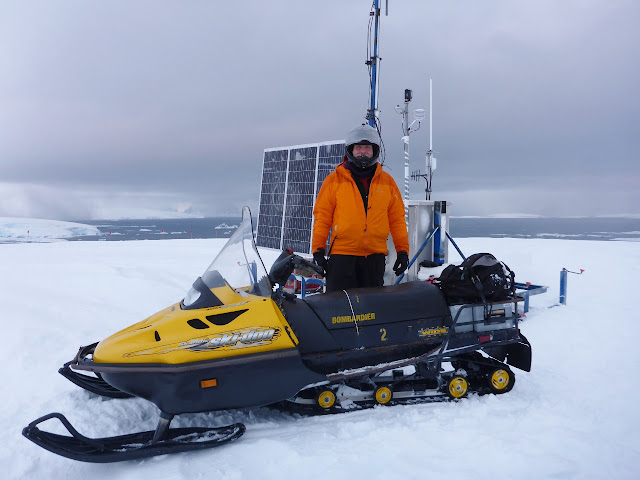This island used to be part of the Marr Glacier. A large piece broke off a few years ago and this island, named Detrich was discovered.
Global
warming has caused over 3 trillion tons of ice to melt from Antarctica in
the past quarter-century and tripled ice loss there in the past decade, a
new study finds.
The total
is equivalent to over 4 quintrillion gallons of water added to the world's
oceans, making Antarctica's melting ice sheets one of the largest
contributors to rising sea levels. That amount of water is enough to fill over
a billion swimming pools and cover Texas to a depth of nearly 13 feet.
“Even
though Antarctica is far from most human civilization, its ice sheet is losing
mass to the ocean, and is an increasing contribution to sea-level rise,"
said study co-author Helen Amanda Fricker, a glaciologist at Scripps
Institution of Oceanography. This "will have large impacts on coastlines
all around all the world.”
“The
future we choose could determine when we need to rebuild airports, cities and
infrastructure so that we can become resilient to such changes," she said.
The study
is the most complete analysis yet to measure Antarctica's ice sheet
changes.
Overall,
scientists say the melting ice in Antarctica is responsible for about one-third
of all sea-level rise around the world. "The global sea level trend is
about 3.4 millimeters per year, so prior to 2012, Antarctica was responsible
for about one-tenth of the trend," said Andrew Shepherd of the University
of Leeds in the U.K. Since then, it has been responsible for three times as
much, he said.
The
threefold jump in ice loss from the continent as a whole is a combination of
increased melting of ice from West Antarctica and the Antarctic Peninsula, with
a small signal from the ice sheet in East Antarctica.
The cause
is clearly due to the warming world, with temperatures boosted by the increased
amount of carbon dioxide humanity emits from the burning of fossil fuels such
as gas, oil and coal.
"We
are able to say that the increased ice loss is mainly due to ocean-driven
melting in West Antarctica," Shepherd said. "The ocean is about 1
degree (F) too warm for the ice, and it is melting and retreating as a
result." He said this matches the temperature changes our planet has
experienced, on average, during the industrial era.
Antarctica’s
potential contribution to global sea level rise from its land-held ice is
almost 7.5 times greater than all other sources of land-held ice in the world
combined, NASA said. The continent stores enough frozen water to raise global
sea levels by 190 feet, if it were to melt entirely, which is not
predicted to occur.
“We should
be worried,” said University of California Irvine’s Isabella Velicogna, one of
88 co-authors. “Things are happening. They are happening faster than we
expected.”
Part of
West Antarctica, where most of the melting occurred, “is in a state of collapse,”
said co-author Ian Joughin of the University of Washington.
Wednesday's
assessment of conditions in Antarctica is based on combined data from 24
satellite surveys. Results from the project were published Wednesday in
the peer-reviewed British journal Nature.
| 




































































